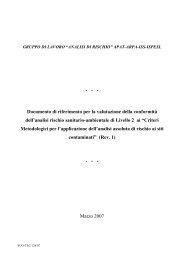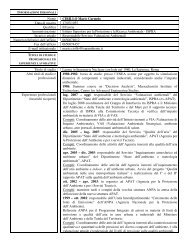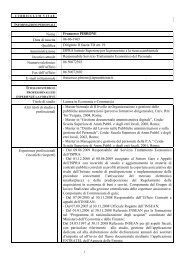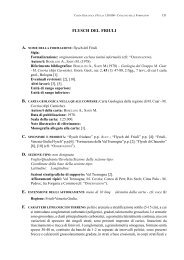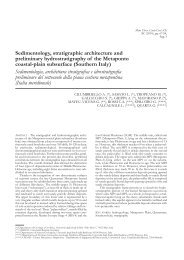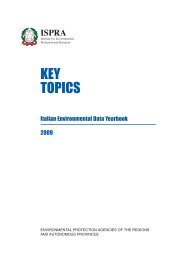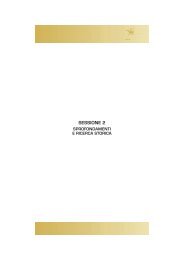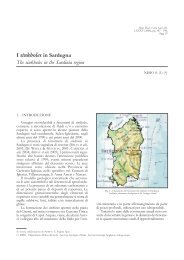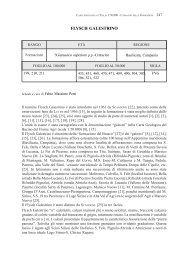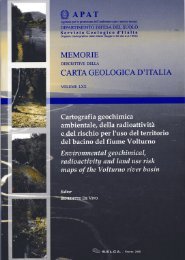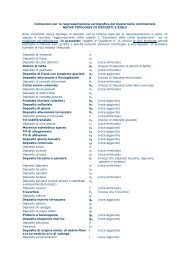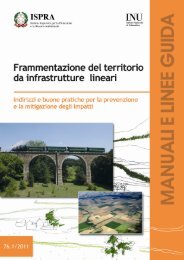Guidebook - Ispra
Guidebook - Ispra
Guidebook - Ispra
Create successful ePaper yourself
Turn your PDF publications into a flip-book with our unique Google optimized e-Paper software.
THE APULIA CARBONATE PLATFORM-MARGIN AND SLOPE, LATE JURASSIC TO<br />
EOCENE OF THE MAIELLA MT. AND GARGANO PROMONTORY:<br />
PHYSICAL STRATIGRAPHY AND ARCHITECTURE P18<br />
Figure 2.4.2 - Schematic stratigraphic section of the<br />
Pennaiedimonte<br />
Figure 2.4.3 - Photo along the Pennapiedimonte path.<br />
Here is exposed the upper part of the Tre Grotte Fm and<br />
the Orfento Fm. Note the thick megabreccia bed along<br />
the road.<br />
Pennapiedimonte section, this formation corresponds<br />
to a less prominent interval made up of calcareous<br />
bioclastic turbidites and pelagic limestones, with<br />
nummulitic debris fl ows intercalated at different<br />
stratigraphic levels. At the base, a few meter thick<br />
conglomerate separates the S. Spirito Fm from<br />
the underlying Orfento Fm. This represents the<br />
last Cretaceous depositional unit that seals the<br />
morphologic differences between the platform<br />
and the basin, across the Maiella escarpment. It is<br />
characterized by about 200 m of bioclastic grainstones<br />
and rudstones, organised into staked convex bodies<br />
(submarine sand waves), some hundred of meters long<br />
and few tens of meters thick. Megabreccias deposits<br />
locally occur at different stratigraphic level within the<br />
Orfento Fm. Along the Pennapiedimonte section, the<br />
lower boundary of this unit corresponds to an erosive<br />
unconformity highlighted by the abrupt change from<br />
coarse bioclastic grainstones and rudstones to pelagic<br />
and fi ne grained limestones of the underlying unit.<br />
Basinward, this boundary corresponds to a correlative<br />
conformity and the depositional features change<br />
gradually from one unit to another.<br />
The underlying unit is the Tre Grotte Fm, defi ned by<br />
the alternation of centimetre to decimetre thick coarse<br />
to fi ne bioclastic packstones, pelagic planktonic<br />
foraminifera-rich mudstones and wackestones,<br />
rose and black chert levels. Metre to few tens of<br />
metres thick breccias and megabreccias bodies<br />
27 - P18<br />
Volume n° 3 - from P14 to P36



